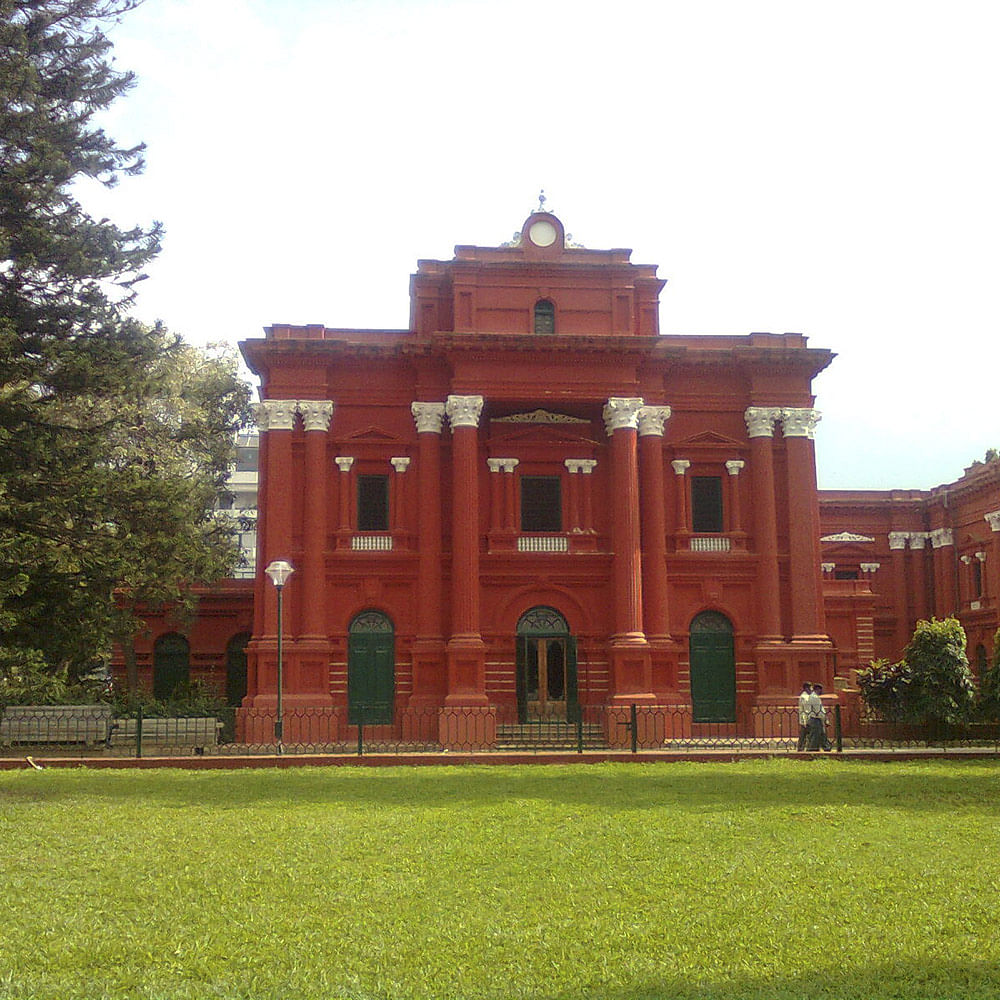Take a trip through the centuries while gazing at relics, intricate sculptures, and vibrant paintings at the Government Museum. The grand old building, painted in bright red, that houses the Government Museum is a monument in itself. Built in 1877, the graceful building is worth staring at for a moment or two, before you stride in (not before you pay for your ticket though – at a nominal fee). Spread across two floors, the museum houses over 70 paintings, 84 sculptures, and hundreds of other artifacts, many of them dating to the neolithic and megalithic periods of human civilisation. Start off by looking at pieces of pottery and earthenware found at archaeological sites in Brahmagiri and Chandravalli. There are also relics from Hampi that include elegant mythological figurines, rusty spoons from the era, and even an elephant figure with one its hind legs missing.
The biggest collection, and one that will bring your history textbooks alive is the Mohenjodaro display. Small stone and wooden cubes that were used as weights, a clay rendition of the Mother Goddess, bangles and shards of hand-painted pottery – it’s all there. Another wing of the museum is dedicated to stone sculptures. There are also Ganapathis, Shivas, Durgas and other mythical creatures from the Chola and Hoysala period.
The second level is dedicated almost entirely to paintings. One side is dedicated to the Mysore style paintings. Do check out the gigantic wooden frame that holds a series of paintings that depict the Ramayana. Another section is dedicated to miniatures paintings done in Deccan, Amer, Mughal, Bikaner, and Kangra styles. All of them are delicately done – portraits of noblemen posing on thrones with roses in their hands, women perched on lotuses, and scenes from royal courts.

